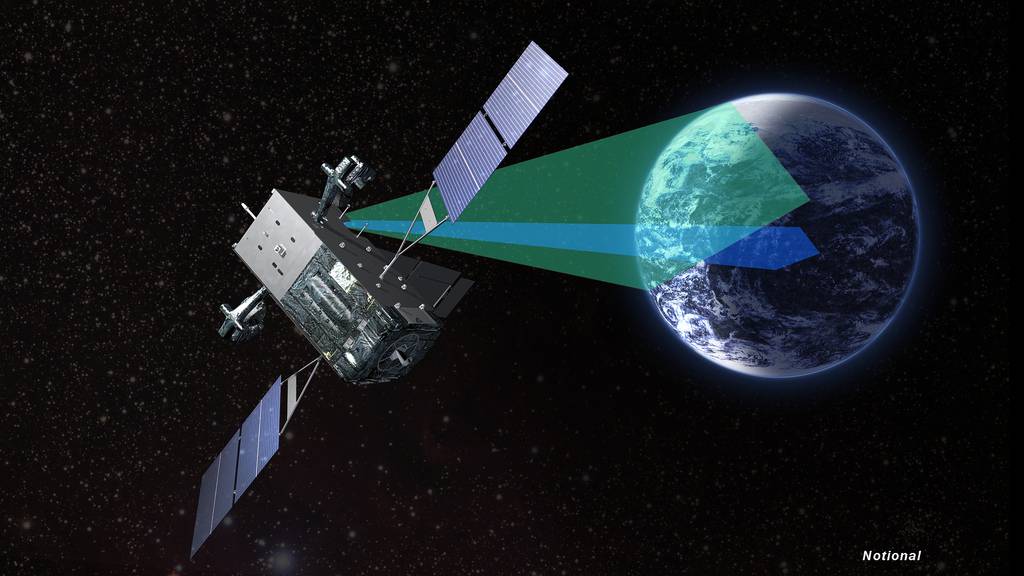WASHINGTON — The U.S. Space Force picked two companies to design digital models of infrared sensors for the service’s next constellation of missile warning satellites, the service announced May 27.
Raytheon Technologies and Millennium Space Systems secured contracts for the Missile Track Custody Prototype effort, which will evaluate whether sensors for the Next-Generation Overhead Persistent Infrared satellites can effectively detect and track ballistic missiles.
The Space Force is building Next-Gen OPIR to succeed the Space Based Infrared System as the nation’s premier missile warning satellite constellation, detecting and tracking ballistic missile threats all over the world 24/7. There will be five satellites in the initial constellation: Three in geosynchronous orbit with another two providing coverage of the Earth’s polar regions. Lockheed Martin is the prime contractor on the first three Next-Gen OPIR GEO satellites, awarded $2.9 billion in 2018 to design them and another $4.9 billion in 2021 to build them. Norhtrop Grumman was awarded $2.4 billion in 2020 to begin design work on the polar satellites.
The U.S. Air Force used a series of reprogramming requests in 2019 to speed up development of Next-Gen OPIR. The Space and Missile Systems Center credits that effort with keeping the program on track for the first geosynchronous satellite to be delivered in 2025. It is expected to launch in 2026.
Under the May 27 awards, Raytheon and Millenium Space Systems “will deliver and validate missile tracking designs and verify predicted performance” of the infrared sensors, the announcement said.
“This effort is a key component of SMC’s Digital Engineering strategy, enabling the government to incorporate and connect multiple contractor models in an automated digital environment,” said Col. Timothy Sejba, SMC program executive officer for space development. “In addition, it will support U.S. Space Force’s architecture analysis by providing realistic cost, schedule, and performance predictions, essentially enabling a digital ‘try it before you buy it’ approach.”
Earlier this month, the Space Force declared that it wanted to be the world’s first fully digital service, unveiling a new cloud-based environment where the government can work with industry and share digital twins of various systems and platforms.
The awards were made under the new Space Enterprise Consortium (SpEC) Other Transaction Agreement, which was set up to oversee $12 billion in contracts for space-related rapid prototyping over the next 10 years. SMC did not release the value of the awards issued to Raytheon and Millenium Space Systems or when they are expected to deliver products, only noting that the agreements will carry the contractors through a payload critical design review and delivery of digital models.
Raytheon is also one of two teams building candidate payloads for the first two Next-Gen OPIR GEO satellites, with Northrop Grumman and Ball Aerospace leading the other. Each is tasked with designing, manufacturing, assembling, integrating and delivering one payload. Lockheed Martin will choose which payload goes on which satellite and select one team to build and deliver another payload for the third satellite. Those payloads passed preliminary design review in May 2020.
Nathan Strout covers space, unmanned and intelligence systems for C4ISRNET.








